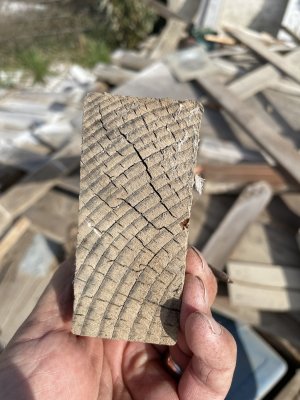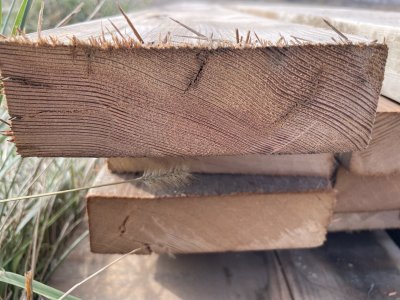TC - I like what lumber you found. What a find!! The old stuff was solid.
By pure accident, I found a piece of 120+ year old chestnut from back when it was plentiful and was used for building framing. It was part of a roof truss system in an old building - over 100 years old. When that roof system was demo'd for new roof work, about 10 or 12 of those big trusses were tossed out into a huge dumpster. The wood looked so black, none of us thought about what kind of wood it might be. We assumed hemlock. I decided to take a piece of truss home with me, since it was heavy, straight, and of a size that could be a fireplace mantel.
I was shocked after I started to run a belt sander over it. It was chestnut - no mistaking it from the color and wood texture. I cut a piece off the one end, and the growth rings looked like Turkey Creek's second pic in the first post. Tight, tight!! I cleaned it up, sanded all the black off it, and cut a section right about 8 ft. long. I left it "rustic" and didn't sand it 100% smooth, tough to do anyway with chestnut's "splintery" texture. There are nail holes in it and a couple other "flaws" like 2 or 3 knots. I finished it with Waterlox - no stain - because the deep rich color is already in the wood. It looks like a reddish-brown gem!! I plan to sell it.
If I'd have guessed / known what those trusses were made of back during the demo - I'd have grabbed all of them. You cannot find chestnut that old unless you fall into a situation like I did. There aren't any current-day old chestnut trees left anymore, so wood like this is a real extreme rarity.




